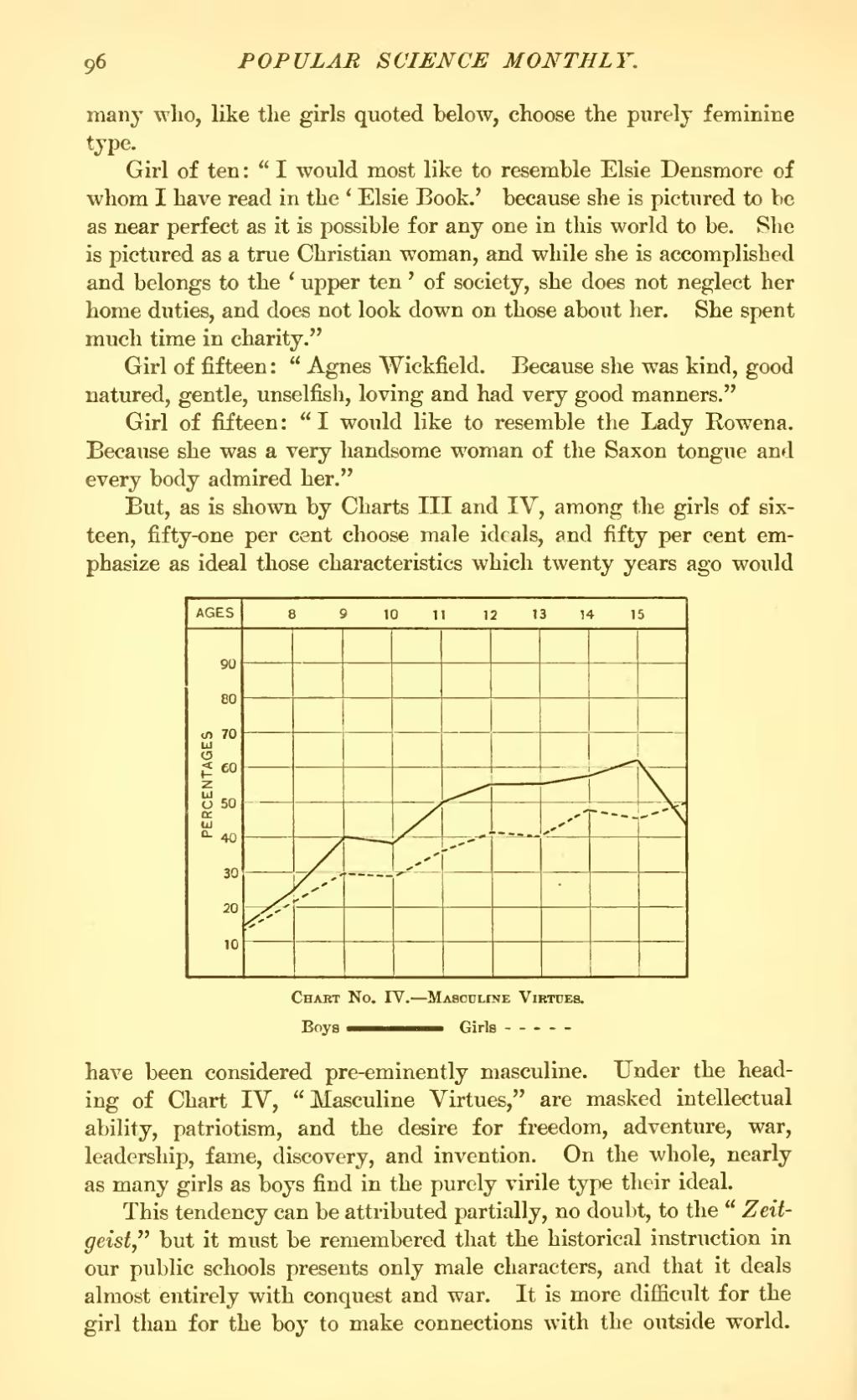many who, like the girls quoted below, choose the purely feminine type.
Girl of ten: "I would most like to resemble Elsie Densmore of whom I have read in the 'Elsie Book.' because she is pictured to be as near perfect as it is possible for any one in this world to be. She is pictured as a true Christian woman, and while she is accomplished and belongs to the 'upper ten' of society, she does not neglect her home duties, and does not look down on those about her. She spent much time in charity."
Girl of fifteen: "Agnes Wickfield. Because she was kind, good natured, gentle, unselfish, loving and had very good manners."
Girl of fifteen: "I would like to resemble the Lady Rowena. Because she was a very handsome woman of the Saxon tongue and every body admired her."
But, as is shown by Charts III and IV, among the girls of sixteen, fifty-one per cent choose male ideals, and fifty per cent emphasize as ideal those characteristics which twenty years ago would Chart

| No. IV.—Masculine Virtues. | |
| Boys ———— | Girls - - - - - |
have been considered pre-eminently masculine. Under the heading of Chart IV, "Masculine Virtues," are masked intellectual ability, patriotism, and the desire for freedom, adventure, war, leadership, fame, discovery, and invention. On the whole, nearly as many girls as boys find in the purely virile type their ideal.
This tendency can be attributed partially, no doubt, to the "Zeitgeist" but it must be remembered that the historical instruction in our public schools presents only male characters, and that it deals almost entirely with conquest and war. It is more difficult for the girl than for the boy to make connections with the outside world.

